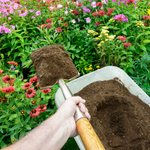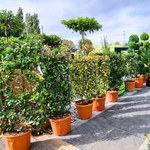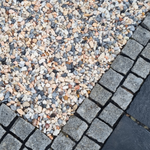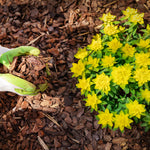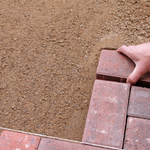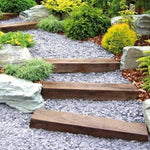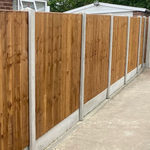Winter Gardening Tips: What to Do in Your Garden This November
As Christmas lists start to take shape, it’s easy to forget that your garden still needs a little attention before winter truly sets in. November is the perfect time to prepare your outdoor space for the colder months and set the stage for a bright, blooming spring. From planting bulbs and repairing your lawn to protecting wildlife and creating compost, here are our best winter gardening tips to keep your garden healthy and beautiful.

1. Plant Spring Bulbs Before the Frost Arrives
Before frost settles in, make sure your spring bulbs are safely in the ground. Daffodils, crocuses, tulips, bluebells and hyacinths all perform best when planted between October and December. The earlier you plant them, the better established they’ll be when spring arrives.
Tip: Use our Organic Bordermix Topsoil or refresh your beds with Peat Free Multi Purpose Compost to give your bulbs a nutrient-rich start. Healthy soil now means strong, vibrant flowers later.
2. Last Chance for Lawn Care Before Winter
Don’t leave your lawn to struggle through winter. A little effort now can transform it into a lush, green carpet next spring.
Topdressing for a Thicker, Healthier Lawn
Our Topdressing is a 70/30 blend of kiln-dried silica sand and topsoil, screened down to 3mm. It’s ideal for rejuvenating thinning lawns and strengthening grass roots.
How to topdress your lawn:
- Rake the surface to remove moss, weeds and leaves.
- Scatter Dandy’s Hardwearing Grass Seed over bare areas (10–15g per m²).
- Brush a 1–2mm layer of Topdressing over the surface with a firm garden brush.
- Water thoroughly if rainfall has been low.
Extra tip: Protect newly seeded areas with netting if birds are a problem.
Lawn Patch Repair Made Easy
If certain areas of your grass have completely died off, it’s time for a lawn patch repair. Our Fill & Fix Lawn Patch Repair Blend makes restoring bare areas quick and simple.
To use:
- Rake or fork the area to loosen compacted soil.
- Add a layer of Fill & Fix Lawn Patch Repair topsoil and seed mix.
- Blend it into the surrounding turf.
- Water well.
You’ll start to see new growth within a few weeks, depending on the weather. If you’re laying turf instead, remember turf is usually 25–50mm thick, so dig down slightly before laying to keep everything level.

3. Protect Hedgehogs and Garden Wildlife
As temperatures drop, hedgehogs are searching for safe, quiet spots to hibernate - and your garden could be the perfect place.
If you’ve built a bonfire, always check for hedgehogs before lighting. You can also create a simple shelter using a pile of leaves, Landscaping Bark, or a small wooden box tucked into a sheltered corner of your garden.
Leave out a shallow dish of water with a few stones in, and offer a little meat based cat or dog food if you can spare it. These small gestures can make a big difference to local wildlife.

4. Tidy Up and Start a Compost Pile
A tidy garden now means less work later. Rake up fallen leaves, dead plants and old roots, and turn them into rich compost for next season.
Quick Compost Recipe:
Layer 6 to 8 inches of leaves, 1 inch of soil and 1 inch of manure / mushroom compost. Add a small amount of nitrogen fertiliser, mix every two weeks, and keep the pile moist.
Our empty bulk bags are ideal for creating your own portable compost heap - easy to move, tidy, and efficient, and the hooded option allows you to close up the top of the bag and increase the composting effect.
5. Grow Your Own Garlic and Winter Onions
November is the perfect time for planting garlic and winter onions. These hardy crops will grow slowly through the cold months and reward you with delicious early harvests next year.
How to Plant Garlic:
- Plant cloves root side down, 4 to 6 inches apart, in rich, well-drained, fertile soil such as our Organic Peat Free VegeGrow Topsoil.
- Cover with 2 inches of topsoil and leave them to grow.
How to Plant Winter Onions:
- Push sets just below soil level (1 to 2 inches deep).
- Space them 4 to 6 inches apart in rows about 12 inches apart.
- Cover lightly with soil and finish with a generous layer of mulch for winter protection.
Explore our full range of mulches here to keep your crops protected all season long.

6. Final November Garden Tips
Before you settle indoors for the winter, take a little time to care for your garden. Plant your bulbs, tidy up the beds, repair your lawn, and lend a hand to garden wildlife. These small steps now will reward you with a beautiful, healthy outdoor space when spring returns.
So pull on your wellies, grab a warm drink, and give your garden the perfect send-off for the year ahead.


